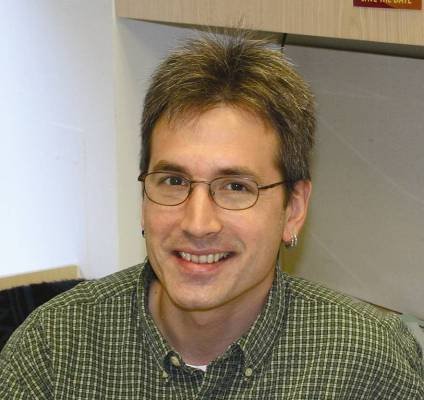Museum Monday
Dawn and I both take the day off from work and visit museums with Sarah. We go to two of the Smithsonian museums, first American Indian and then American History. Apparently I haven't been to a history museum in a while, as I find myself pretty much overwhelmed by the overstimulation. It's just all too much.
The docent at the NMAI directs us to the fourth floor, where there's an introductory film that plays every twenty minutes in the Lelawi Theater. We get up there about halfway through the eleven o'clock showing, sow we wait ten minutes or so for the next one. Inside the theater there are no seats proper, just risers for seating, with the screen in the middle, ampitheatre style. The screen is a triangular wooden structure with three blankets, one on each side, on which is projected the film that we watch, called Who We Are. There's a boulder beneath the screen structure on which images are projected as well. And there's a domed ceiling above us, again with images. There's a lot to look at.
The film itself is rather shapeless, just sort of meandering from cliches about respecting the land and losing & refinding ancient practices. There's one montage that I like, showing the immense diversity of this group of peoples: people dancing around a fire, then like someone bowling, then an astronaut, that sort of thing.
We exit from the theater and are led immediately to the Our Universes exhibition. I try to find some structure here, but I fail. There's a sign at the beginning saying that the stars on the ceiling and the equinoxes & solstices on the floor will help guide us. I see stars, but nothing on the floor. I do eventually come to recognize that there are eight galleries in the exhibition, four groups of two, each group probably representing a season or one of the equinoxes or solstices, but it's pretty vague. I'm looking for more signage.
Each gallery is presented to us by a particular "community," e.g. Pueblo or Quechua. Here again we're faced with the remarkable diversity of the subject of the museum, the peoples themselves stretching from Point Barrow to Cape Horn. That's a lot of territory to cover. A lot of people.
There are no straight paths anywhere in the museum. All of the wall curve one way or the other. At times the glass of the exhibit cases throw off weird reflections of the light, so I have to sort of dodge back and forth to try to see whatever is in the case. The galleries are all shaped differently, so I lose my way and double back at times when I'm trying to go a different way. It's all part of the experience, I guess, a deliberate anti-linear-ness. A different way of thinking.
We eat in the Mitsitam Native Foods Café. It's a cafeteria setup with different stations representing different regions. Dawn & I both grab from the South American foods, where apparently tamales is the plural of tamal & I have one. Dawn has the quinoa. Sarah goes for a wild rice salad.
There's more overstimulation at American History, where we tour the America on the Move exhibition. It's all more like the American Nostalgia Museum to me. Like for instance, you'd figure that a history of American transportation exhibit would include the automobile, and you'd be right. But do they really need the 1948 Tucker and the 1950 Studebaker and the 1953 Glasspar and the 1954 Buick and the 1965 Ford LTD and the 1965 Mustang and the 1967 Pontiac Grand Prix and the 1972 VW Beetle and the 1977 Honda Civic and ...
Well, you get the idea.
I do actually have a hootin' good time at the American Maritime Enterprise exhibit. There're lots of models of sailing ships of all scales. Good Horatio fun, although they do have a lot of stupid stuff from before and after the Napoleonic Wars, like anybody'd be interested in that. I go through the hall twice, and then we go through again when we leave.


2 Comments:
they do have a lot of stupid stuff from before and after the Napoleonic Wars, like anybody'd be interested in that
It's not often that my brother and I agree on anything French.
Or anything, really.
I loved the museums when I lived up there, and miss them more than ever now that I live in Nashville and know what I'm missing. Some day I look forward to meeting up with you guys and making a day of it. I've only seen the outside of the Museum of the American Indian.
Incidentally, we went up to Cooperstown, NY on our honeymoon. There's a lot more there than just the Baseball HOF. There's a really neat Farmer's Museum, and maybe best of all, there's the Fenimore Art Museum, which contains the Thaw Collection, an incredible collection of North American Indian art dating from 500 B.C. to the present day. It was incredible; the baskets, the textiles, the leather clothing, the jewelery. I couldn't get enough of it.
I also visited a great museum in Phoenix several years ago, and learned about the exquisite black on black pottery developed by Native Americans in the Western U.S. in the first quarter of the 20th century. Such talent; such beauty. (See below.)
http://mcclungmuseum.utk.edu/specex/singclay/si-p40.jpg
Post a Comment
<< Home